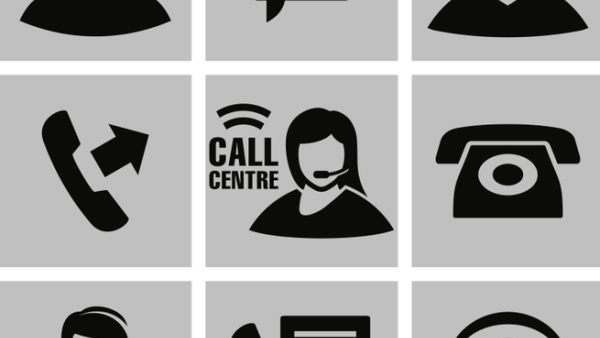By Aghaddir Ali
Sharjah is promoting its round-the-clock helpline to report child abuse incidents. Officials from the Social Services Department, which initiated the project said the service offers a confidential means of reporting incidents involving abuse of children in the emirate.
The aim of the 800 700 toll-free line is to the check abuse cases and bolster the crime reporting system to better enable responses to victims, officials said.
The helpline is staffed with professional crisis counsellors who, through interpreters, can provide assistance in two languages, Arabic and English. The helpline offers crisis intervention, information, literature, and referrals to hundreds of emergency, social service, and support resources. All calls are confidential.
Seven employees — four women and three men — work at the call centre of the child helpline in three shifts throughout the day complemented by a number of social workers including social specialists, legal specialists and psychological specialists.
The child protection centre, touted as one of the first of its kind in the region when it was formed in 2007, has received calls for assistance from all emirates in the UAE, said Ahmad Ebrahim Al Tartoor, director of Protection of Children’s Rights Administration at Sharjah Social Services Department.
Helpline overseers said the service documented 305 cases in 2012 and another 221 cases during the first six months of 2013.
The department eases the problem by providing support such as rent payments, school fees or food coupons.
These calls come to help children at risk of abuse, distressed parents seeking crisis intervention and concerned individuals who suspect that child abuse may be occurring. The helpline is also a valuable resource for those who are mandated by law to report suspected abuse, such as school personnel, medical and mental health professionals.
When calls are placed to the helpline, a qualified crisis counsellor will answer and assist, Al Tartoor told Gulf News.
Child abuse is defined by the centre and under the law as the inappropriate treatment of a child under the age of 18 by a parent, caretaker, someone living in their home or someone who works with or around children. Abuse of a child is anything that causes injury or puts the child in danger of physical injury. Child abuse can be physical, sexual, emotional or neglect and happens when a parent or responsible caretaker fails to provide adequate supervision, food, clothing, shelter or other basics for a child, Al Tartoor said.
Al Tartoor explained that child abuse is any action (or lack of) which endangers or impairs a child’s physical, mental or emotional health and development. Child abuse occurs in different ways. All forms of abuse and neglect are harmful to the child. There are many reasons why children are at risk of abuse and neglect. For example, their families do not have adequate support from relatives or the community , or their parents are experiencing a lot of stress such as unemployment, illness, isolation or loneliness, or their parents may not have experienced good parenting themselves, or their parents may be alcohol or drug-dependent or have mental health issues or there may be domestic violence in the household.
Sometimes police do not need to be involved, said Al Tartoor.
“When you say you are from social services, they sometimes allow us to enter the home without [police] permission,” Al Tartoor added.
But if the child is believed to be in danger at home, a social worker obtains legal permission to enter with police.
“We take the child to the hospital for tests and to make a report,” Al Tartoor said.
If the child needs to be removed from parents, he or she is temporarily placed in the child protection right centre.
The child and family will receive assistance with the aim to eventually return custody of the child to his/her family if the theat of abuse no longer exists. The department places importance on maintaining family ties.
Sometimes, however, that is not possible, Al Tartoor said. If this is the case the child is placed with a relative.
“Some fathers or families are difficult to be guided,” he said. “We contact a third party, like an aunt, uncle, grandfather, grandmother.”
Before closing a case, social workers make follow-up visits to the home of the child to make sure that the child is living in a safe environment.
The helpline’s social workers and psychologists cooperate with police to investigate cases, provide services to families and give shelter to children in danger.
“We follow up the problem until it is finished,” Al Tartoor said.
The helpline is a member of the global network Child Helpline International.
In one case, a mother was in dispute with her husband and she pushed her daughter severely against the wall and broke her skull because the argument with her husband became heated. The baby sustained severe bleeding in her skull and was taken to the ICU at Al Qassimi Hospital.
Some cases were referred to police to interfere and solve the issue.
Mohammad Mubarak, director of the child helpline number, told Gulf News that those involved in child violence will be tried according to UAE laws, which protect children and punish those involved in child violence.
Mubarak said that he is working with his staff to follow up all calls and cases.
Mubarak said that one of the most important concerns of any community is the health, safety and well-being of its children and young people.
Whilst parents and caretakers are responsible for the safety and welfare of children in their custody, protecting children and young people from abuse and neglect is the responsibility of the whole community.
The child helpline works based on human rights that children everywhere have the right to survival; to develop to the fullest; to be protected from harmful influences, abuse and exploitation; to participate fully in family, cultural and social life and have the right to be heard and to express their views without fear of harm or reprisal.
It helps ensure all children have the opportunity to be heard. It also adheres to the four core principles: non-discrimination; the best interests of the child; the right to life, survival and development; and respect for the views of the child.
“To make access easier and simple for children, child helplines endeavour to obtain short, easy to remember, toll-free phone numbers. These ensure that all children can pick up a phone and call a child helpline at any time, without worrying about costs,” Mubarak said.
“Child helpline counsellors actively listen to children who wish to express their concerns, and link children and young people to resources and emergency assistance as needed. Where necessary, it also directly intervenes, providing shelter, education and legal support. The service also could reach out to those children who may not be able to access the services on their own. Finally, it also works to raise awareness of its services and of the issues faced by children,” Mubarak said.








